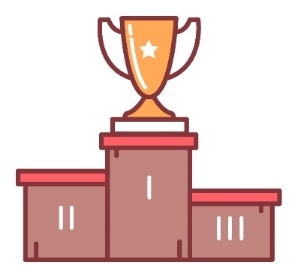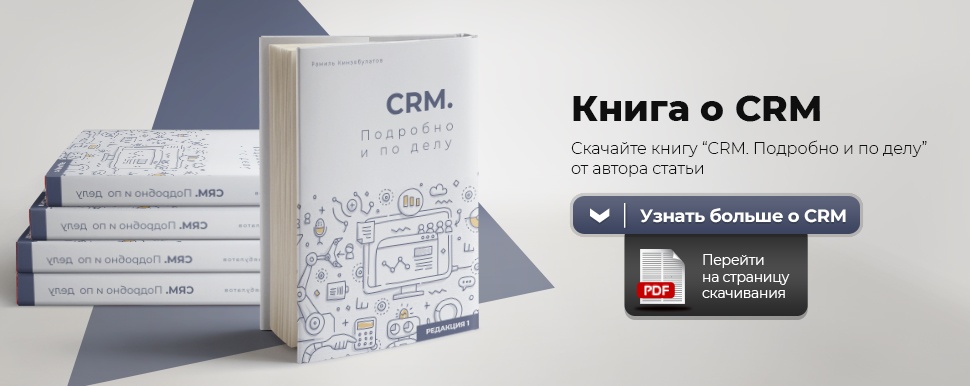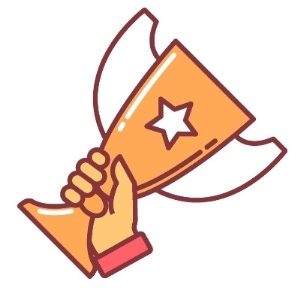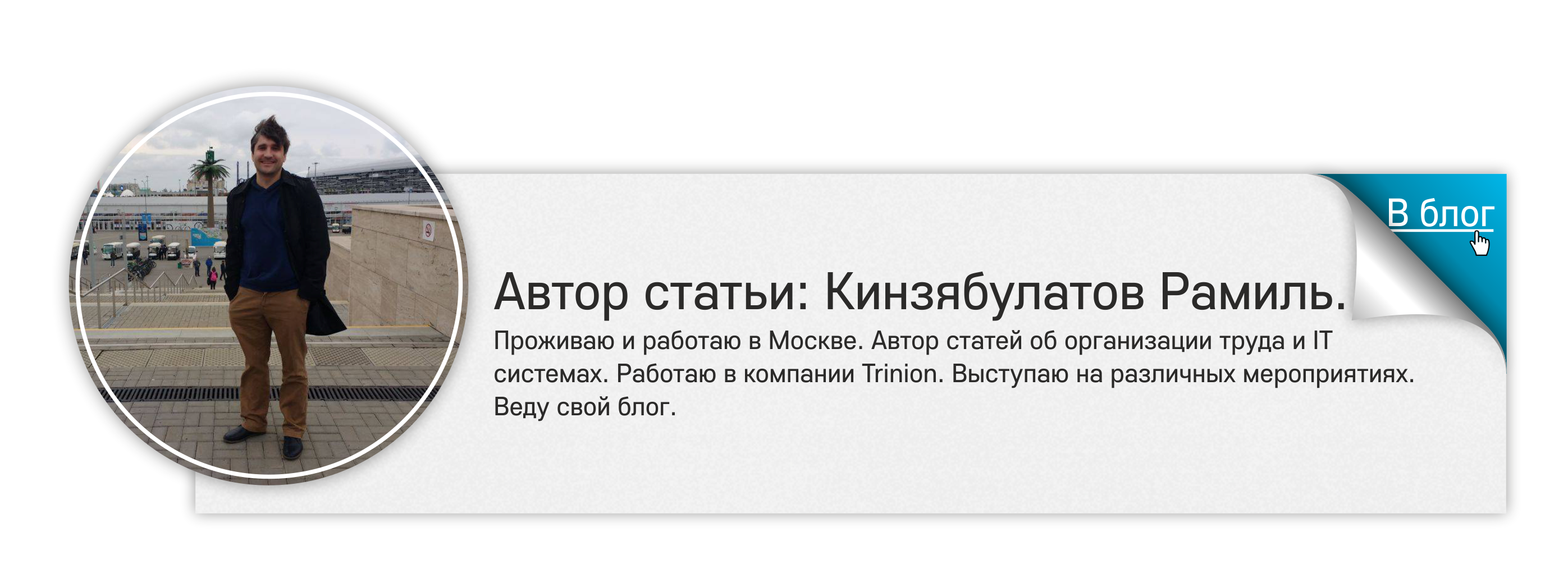Gamification aka business gamification

In this article I want to talk about such an interesting phenomenon in modern business as gamification (gamification), i.e. the use of methods from the gaming industry in the organization of work processes in order to increase performance.
As a business consultant, I very often carry out work on the implementation of a CRM system, and in the process I also encounter employee resistance. It is difficult for people to change habits, including at work, to learn new tools. Moreover, the implementation of CRM is almost always directly related to increasing control of all work processes, the quality of work of sales staff, as well as how they use working time in the office and on the move. The process of implementing CRM-systems, I examined in detail in past articles, for example, " What is CRM ."
So, the successful implementation of a CRM system always consists of two parts:
- Proper setup of a software product for successful and comfortable work;
- Employee motivation for a quick and effective transition to a new system.
How this motivation is implemented depends on the particular company and on the management principles that are adopted in it. It can be financial motivation (both bonuses and fines and other administrative penalties), it can be some other administrative solution to the issue, or maybe a competition, i.e. gamification of work.
In modern conditions, most people already have little financial incentives in their work, of course, the level of earnings remains a very important parameter, as well as social security and some kind of material bonuses. But still, modern people want more, they want some kind of self-realization, an increase in interest in work, some goals, competition, achievements.
And here the methods of gamification in business come to the rescue, which make it possible to use gaming and competitive moments to increase indicators important for work. Of course, gamification does not eliminate the need to pay for work or apply administrative management methods; rather, gamification allows you to supplement these methods with another interesting and modern approach.
What is gamification?
Gamification - the use of game mechanics in non-game processes. When applied correctly, this approach can significantly increase the efficiency of solving business problems.
This relatively new method of motivating employees came to our country from the West, and it consists in the application of some kind of gaming moments. Thus, to increase the efficiency of employees, an understanding of human psychology is used. People, including adults, love the game, they are interested in competition, the desire to be the first is inherent. These features have long and very successfully been applied in the gaming industry. And now they have also come into business, thanks to which an increase in work efficiency is achieved with minimal investment.
Gamification methods in business allow you to achieve:
- Increase employee loyalty;
- Increase productivity.

On the one hand, the person involved in the gamification process is very interested in working with him, he is happy to come to work in this company every day, and is looking forward to some new achievements. All this helps to increase employee loyalty and reduce staff turnover.
On the other hand, these methods increase the productivity and labor efficiency of each employee, since people who are emotionally involved in the competition, in the game process, which is combined with work, begin to work more efficiently, more fruitfully, with great interest and involvement in the work process itself.
How is gamification implemented in CRM?
Gamification in CRM systems, like any variant of gamification in business, is implemented using a special reporting system. These reports are not necessarily associated with financial or quantitative indicators, on the basis of which the remuneration of employees is calculated or an analysis of the performance of each manager is carried out. For gamification, any parameters are suitable, including those that are generally not related to the sale process. It all depends on the goal.
These reports, in contrast to the basic reporting, allow you to analyze not only digital indicators, but also any other parameters. Since they are intended for the gameplay, reporting should be clear, vibrant and colorful. But, unlike KPI, reports for gamification are generated not only for a month, quarter, or other period important for analysis, but at any convenient time. And the display of information in them can be just as clear or even more vivid. In gamification, charts, visual charts, TOP leader lists and so on are actively used, it all depends on the capabilities of CRM and the imagination of the compilers of the report.
As for the data for analysis, there can also be many options. For example, when switching to a new CRM system, you can create a report that will count the number of visits of each user to the system, the number of outgoing calls that each employee made from the system, or the total amount of time that each user spends in the system. Competition in such indicators will help you quickly switch to work with a new software product. And in order to increase sales efficiency, you can compete in terms, from the appearance of the lead to receiving payment (the lower it is, the better), and by such an indicator as the largest order amount or the sales volume of a particular product, which for some reason Reasons for the company to be urgently implemented.
There can be many options for gamification, the main thing is to come up with a suitable game and create a vivid and clear report for it that each employee will see, for example, when entering the system, or he will be able to generate at any convenient time to check his results.
Creating a game - setting goals, goals, scenarios
Creating a game consists of solving several issues:
- You need to choose the goal of the game - this will be the task that you want to set for the employees. It can be situational (to sell a certain product, fully upgrade to new software, etc.), or it can be one of the important parameters for working as a whole (increasing the average and maximum check, reducing the terms of deferred payments from customers, increasing the amount of shipment wholesale customers, etc.)
- Enter a time frame. They are determined by the goals of the company and are limited by the timing of solving the tasks. The competition may be unlimited, but even in this case there must be some intermediate stages and summing up.
- Think over motivation. Usually for these purposes some kind of badges are created in the system, titles, possibly material incentives (prizes).
How the scenario is described:
- Beginning of the game. Date and participants.
- Intermediate stages (goals), according to the results of each participant points are awarded.
- The final game - the date or achievement of a certain indicator, after which the results are summed up and the winners are called.
For example, the company plans to participate in the exhibition, and a game is being prepared for this event. The main goals of the company are to attract new customers and direct sales at the exhibition. At the same time, in order to achieve the set goals, it is very important to think over the game scenario for two equivalent directions.
If you focus on direct sales and ignore or do not sufficiently appreciate the attraction of leads in the game process, then the employees will massively concentrate their efforts on sales, and insufficient attention will be paid to attracting new customers. Conversely, if the main goal is to attract new customers, the number of direct sales as a result will be minimal.
And therefore, for the gameplay of work at the exhibition, two equal directions must be created - these are direct sales and attracting new customers. In each of the areas, points should be calculated, and as a result of the game, such achievements will be recorded:
- Connoisseur of direct sales;
- Expert in attracting leads.
The beginning of the game is considered the beginning of the company at the exhibition. Further, according to the results of each day of work, points are calculated. For example, each direct sale will be considered as 10 points, and each lead - 4 points. If the exhibition lasts several days to increase motivation, you can summarize the results after entering the results of the work for each day.
According to the results of the entire exhibition, the final leaders in each of the areas are determined. You can also choose an unconditional leader who scored maximum points in the overall standings, i.e. points for both leads and sales. A reward can be either a “connoisseur” badge or some motivating prize.
Long-term games and methods of motivation

Games designed for a long period of time are most often aimed at increasing the loyalty of employees, although here you can enter some kind of competitive moment.
For example, in a company on an ongoing basis, a competition can be held for the quality of the work of sales managers, in which work is also carried out in several areas at once. It can be:
- The number of applications;
- The number of calls and meetings;
- Amounts of orders;
- Amounts of payments, etc.
In this case, points are also awarded for each parameter and, according to the results of the week or month, “call leaders”, “order leaders”, “leaders of customer acquisition” or simply “sales leader” according to the results of all parameters are identified. These badges can be “rolling” or remain as a memorial on an ongoing basis, as commemorative medals, on the basis of which you can also track the number of different achievements of the employee and give special titles and prizes.
Such indicators as the term of an employee in the company are also very useful for increasing loyalty. For example, according to the results of the first year of work, you can assign him the badge "A whole year with the company." And for employees who have worked for 3 years or more - “Old Timer Badge” and so on. There are a lot of options and they depend only on your imagination.
Reasons for Gamification Effectiveness
The most important advantage of this solution is the increased interest of employees in the work. The routine disappears, the excitement of competition appears. As a result, the work efficiency of everyone who is interested in the gameplay is growing significantly.
It is also important to understand that games can be held very different and for a wide range of different parameters. As a result, almost every employee somewhere in a certain period will be among the leaders, will receive his badge and / or prize, which also increases the desire to participate in competitions, increases the same gaming excitement, which brings huge revenues in the gaming industry, and in business - a steady increase in efficiency and quality of work. By the way, about how these things can technically be implemented within the framework of Zoho, I also plan to consider in detail at the Gamification in ZOHO CRM webinar .
Examples of successful solutions
There is a common problem in the sales department of many companies. Employees know that wages are calculated based on the amount of shipments or payments made per month. As a result, often the manager during the first weeks works very little and without much desire, and towards the end of the month he begins to actively sell, ask customers to close some invoices before the end of the month and draw up new applications. Often, even one of the managers draws up the shipment not for himself, but for a colleague at his request, since he does not have a small amount up to the norm. Mutual assistance is, of course, good human quality, but business needs objective indicators for each employee. And the work on the principle - half a month is nothing, and then - the emergency, is also extremely unproductive for the company as a whole.
- Who will make the most calls;
- Кто больше товара продаст за день суммарно;
- Кто оформит большее число заказов;
- Кто привлечет и успешно начнет работу с большим числом лидов и т.д.
Итоги можно подводить каждый день, выделять «лидера дня», а также еженедельно на основе суммарных данных. Такой подход поможет сотрудникам каждый день работать с интересом и максимальной отдачей, и нагрузка на другие подразделения компании будет распределяться равномерно, а объем продаж – увеличится.
Thus, the use of gamification in business allows management to get more diverse levers to motivate employees, and employees themselves to increase interest in work, get rid of routine, increase both company profits and their own earnings. Moreover, funds for this option of motivation will require very little. The main thing is a well-thought-out system of game indicators and the introduction of beautiful reports in a CRM system as necessary.

